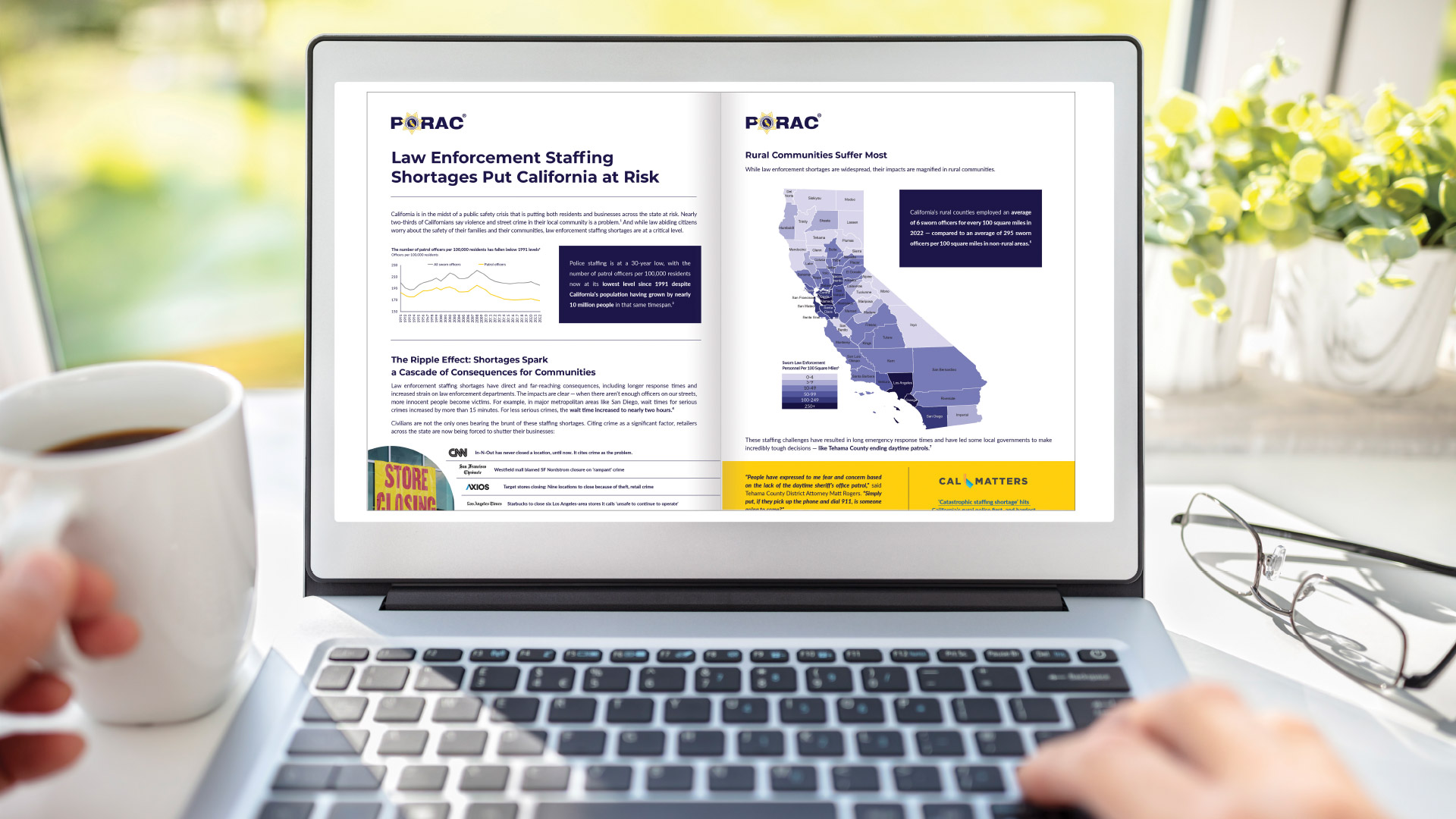 In August, PORAC published a research brief on the current state of law enforcement staffing shortages in California. The brief highlighted first-of-its-kind research showcasing the inconsistent levels of law enforcement staffing across California, utilizing California Department of Justice (DOJ) data.
In August, PORAC published a research brief on the current state of law enforcement staffing shortages in California. The brief highlighted first-of-its-kind research showcasing the inconsistent levels of law enforcement staffing across California, utilizing California Department of Justice (DOJ) data.
Since the research brief was published, the DOJ released updated data about the number of sworn law enforcement officers in each county. As such, PORAC has updated its research brief accordingly. Updates include:
- The average number of sworn law enforcement officials in non-rural areas decreased from 295 sworn officers per 100 square miles to 290 sworn officers.
- The average number of sworn law enforcement officers in rural areas has remained at just six sworn officers per 100 square miles — a staggering 2% of what staffing is in non-rural areas.
- San Benito and Mariposa counties went from having zero to four officers per 100 square miles to five to nine officers per 100 square miles.
- Madera and Lake counties went from having five to nine officers per 100 square miles to 10 to 49 officers per 100 square miles.
While we are pleased that a handful of rural counties have slightly increased their staffing levels, the average number of law enforcement officials in non-rural counties decreased and many counties still have woefully low staffing levels. This ongoing crisis continues to put the safety of all California communities at risk. PORAC is working with elected officials on both sides of the aisle to find practical, comprehensive solutions to the current overwhelming law enforcement staffing challenges plaguing departments across the state.
Our police staffing issue brief is just one example of PORAC’s ongoing original research and analysis illuminating the public safety concerns facing our state and nation. Our goal is to provide lawmakers and other decision makers with objective data and recommendations to inform their approach to these matters and present a clear picture of the impact their legislative and policy actions have on our officers and communities. These resources are now highlighted in a new section on our website at PORAC.org/research. Be sure to stay up to date on the information and share it with your colleagues, agency and civic leaders, and elected officials.
